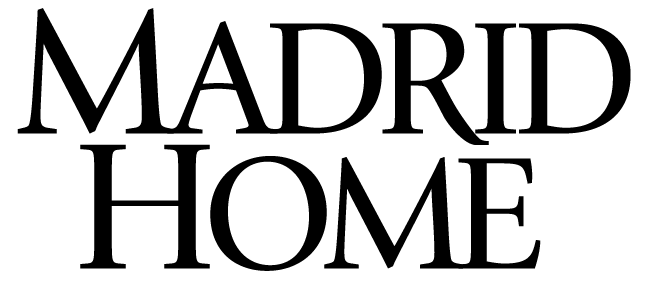Dry Needling Explained: Targeted Relief for Muscle Pain and Tension
What is it?
Dry needling is a skilled intervention that uses a thin filiform needle to penetrate the skin and stimulate underlying myofascial trigger points, “knots” within the muscle to improve movement and reduce pain.
How does it work?
Dry needling produces the same effect as an anesthetic injection in terms of inactivating trigger points. Instead of using a medication to chemically resolve the knots, the filiform needle deforms the muscle fiber involved and resolves the dysfunctional muscle state.
How is it different from acupuncture?
While both Dry Needling and Acupuncture use the same filiform needles, the two treatments differ greatly in theory.
Traditional acupuncture targets points along predetermined pathways of the body called meridians. The needles are placed along these meridians to restore energy flow through the body, which, when impaired, results in pain and illness according to traditional Chinese medicine.
Dry needling aims to target palpable trigger points within otherwise healthy muscle. When these points are stimulated, they directly produce an individual’s pain/symptoms. These TrPs can be identified via imaging using US or MRI.
What issues is Dry Needling good for?
Tension headaches
Chronic neck/shoulder pain
Low back pain/sciatica
Acute muscle strains
Whiplash
What can I expect during a treatment?
During dry needling you will be positioned comfortably so the area of concern is relaxed and easily accessible.
The tissue is thoroughly palpated to localize the individual knots and once this is done the filiform needle is inserted into the muscle with a gentle tap.
With the needle inserted into the muscle a “twitch or contraction” can be felt indicating the trigger point has been stimulated and within 15-60” the needle is removed as the trigger point resolves.
Often, the patient feels a “muscle soreness” immediately following the treatment that can be remedied with hot or cold packs and resolves within 24 hours.
BLOG
Dry Needling: A Modern Approach to Muscle Pain Relief
If you’ve ever dealt with persistent muscle pain or tightness that just won’t go away with stretching or massage, dry needling might be the solution you’ve been looking for. This modern technique targets muscle “knots” to relieve pain, restore mobility, and improve your overall function.
What Is Dry Needling?
Dry needling is a skilled therapeutic intervention that involves inserting a thin, filiform needle into specific areas of the muscle called myofascial trigger points (TrPs). These trigger points, often referred to as "knots,” can contribute to pain, restricted movement, and muscle dysfunction.
By targeting and stimulating these points directly, dry needling helps release muscle tension, reduce pain, and improve range of motion without the use of medication.
How Does Dry Needling Work?
When the needle penetrates the trigger point, it mechanically disrupts the dysfunctional muscle fibers and often elicits a quick contraction or “twitch response.” This twitch is a good sign, it means the needle has reached the trigger point and is prompting the muscle to release its tension.
This process resets the muscle to a healthier state, much like an anesthetic injection might, but without the medication. It can deactivate pain signals and improve circulation and healing in the treated area.
Dry Needling vs. Acupuncture: What's the Difference?
Although dry needling and acupuncture use the same type of needle, the two practices are fundamentally different in their approach and purpose:
Acupuncture is based on traditional Chinese medicine and involves placing needles along meridians (energy pathways) to restore the flow of “Qi” (energy) throughout the body.
Dry needling, in contrast, is a western medicine technique focused on trigger points in muscles that are directly responsible for pain and dysfunction. These points can often be detected through palpation or imaging tools such as ultrasound or MRI.
Simply put, acupuncture aims to balance energy flow, while dry needling targets muscular sources of pain.
What Conditions Benefit from Dry Needling?
Dry needling is highly effective for treating a variety of acute and chronic musculoskeletal conditions, including:
Tension headaches
Chronic neck and shoulder pain
Low back pain and sciatica
Acute muscle strains
Whiplash and postural imbalances
By addressing the root muscular cause of discomfort, dry needling can provide rapid relief and support long-term healing.
What to Expect During a Dry Needling Session
Here’s a step-by-step overview of what happens during treatment:
Comfortable Positioning: You’ll be positioned so that the affected muscle is relaxed and easy to access.
Palpation of Tissue: Your therapist will carefully locate the trigger points through manual examination.
Needle Insertion: A sterile, thin needle is inserted directly into the knot with a gentle tap.
Twitch Response: You may feel a quick muscle contraction or “twitch,” indicating that the trigger point has been stimulated.
Needle Removal: The needle is usually removed within 15 to 60 seconds, once the trigger point releases.
After the session, some muscle soreness, similar to a post-workout feeling, may occur. This is normal and usually resolves within 24 hours. Applying heat or cold packs can help manage this discomfort.
Is Dry Needling Right for You?
Dry needling is a safe and evidence-based technique that can play a crucial role in your pain management and rehabilitation plan. If you're struggling with stubborn muscle tightness or pain that doesn’t respond to traditional treatments, talk to your healthcare provider or physical therapist to see if dry needling is the right fit for you.

